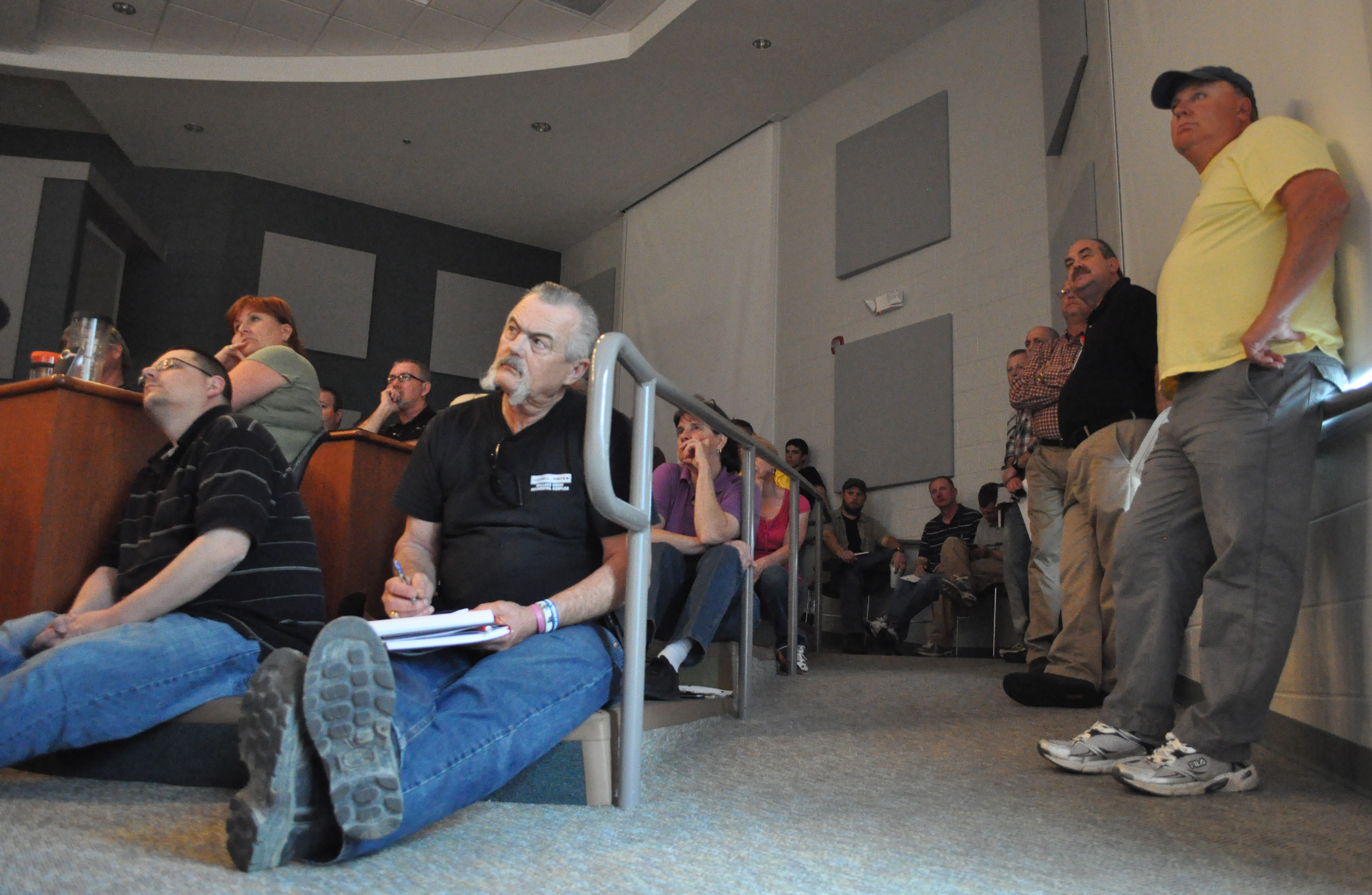Storm spotters class fills up in Cleveland, Tenn., after tornadoes
Friday, January 1, 1904
 Participants in Thursday evening's "storm spotting class" sit on the stairs and stand against the wall due to an unusually high volume of people participating in the class given by the National Weather Service at Lee University in Cleveland, Tenn. The participants completing the two-hour seminar receive a certificate and become a volunteer storm spotter.
Participants in Thursday evening's "storm spotting class" sit on the stairs and stand against the wall due to an unusually high volume of people participating in the class given by the National Weather Service at Lee University in Cleveland, Tenn. The participants completing the two-hour seminar receive a certificate and become a volunteer storm spotter.GET INVOLVEDThe National Weather Service in Morristown, Tenn., holds storm spotter classes in each of the 33 counties in East Tennessee, Southwest Virginia and Western North Carolina. The next class in this area is in Decatur at 6 p.m. March 28 at the Meigs County Emergency Operations Center on Highway 58.
CLEVELAND, Tenn. -- Everyone has a storm story.
Those memories of the tornadoes that struck Bradley County in 2011 and this year brought out a large crowd Thursday evening for an annual storm spotters class led by the National Weather Service.
"Bradley and Hamilton counties have been in the crosshairs the past couple of years," George Matthews with the weather service in Morristown, Tenn., said. "So we were expecting a larger crowd."
Those who stayed the full two hours each received a two-year certificate, an identification number and contact information to the weather service. They become part of SkyWarn, the National Weather Service's volunteer spotter network.
Joyce Silvenis, already a radio operator and spotter, said the work is a way to serve the community from one's own neighborhood.
"It is nothing at all like storm chasing you see on TV," she said.
Most spotters call Morristown with what they are observing. If a tornado is on the ground close by, she said, spotters elsewhere get off the phone or radio so others can better communicate.
Terry Burnette sat in the back row of the Lee University lecture room, watching it fill up with people.
"Just getting more information is part of why I'm here," he said.
On April 27, 2011, Burnette and his family were driving through Dyersburg, Tenn., when that city's tornado warnings sounded, he said.
Typically the class, which is organized by the Auxiliary Communications Service, also known as Ham radio operators, attracts 50 or so people. On Thursday, people filled the 101 seats in the lecture hall and at least another 100 crowded around the sides and back of the room. Others were in the hallway outside, neither able to see the PowerPoint presentation or hear the speakers. Others came, saw the crowd and left.
"I grew up fascinated about severe weather," Matt Broweder said. "We've had quite a few tornadoes hit this area, like the EF4 that hit Ooltewah.
"I would like to get with SkyWarn and learn to become a radio operator, too," he said.
Jared Duke, an Ole Miss student, said he had wanted to attend the class since last year.
"It's a way to help. There's just so much radar can do," he said. "From what I've found out this is the only way to help without going through meteorology school."
